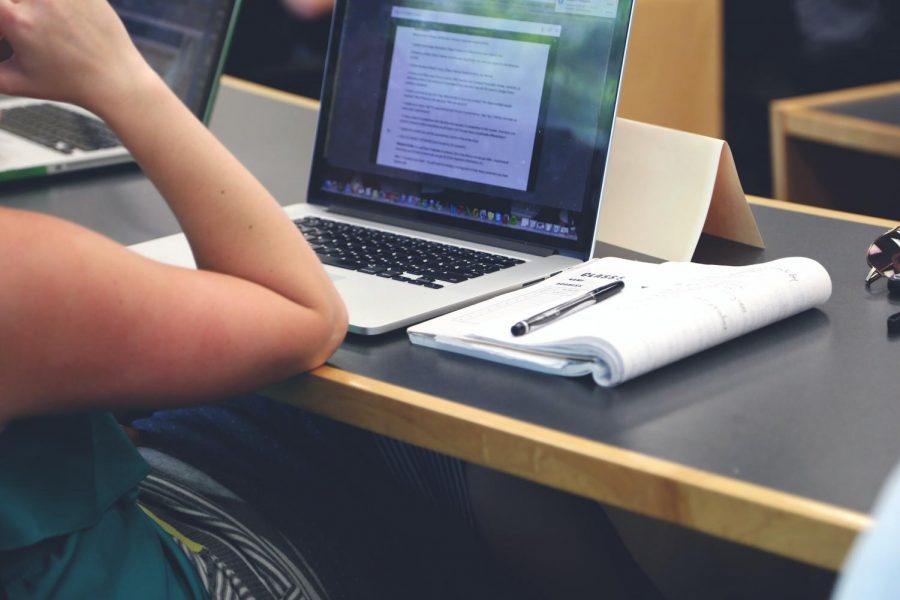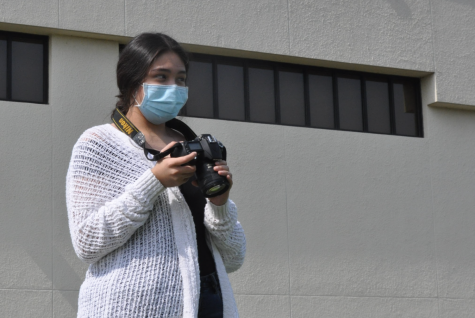How COVID-19 could affect education and learning
Students filled the hallways in excitement at the end of the school day March 6 as they said goodbye to their teachers and friends. Wishes such as “Have a good spring break!” filled almost every corner of the campus. Students’ faces were plastered with smiles as they anticipated plans for a week of fun and relaxation. The district ultimately decided to close classrooms until the end of the school year as per Texas Gov. Greg Abott’s order, meaning that students experienced their last day of the school year without even knowing. This order also led to the enforcement of the district’s new remote learning plan — first announced March 18 — for the remaining term. The remote learning plan includes the sudden switch to online learning tools such as Edgenuity, Zoom and Google Classroom.
While there are varying opinions amongst the student body regarding how effective online education is, the new systems of learning the pandemic provided us can change the way we view education from now on and allow us to improve both our education system and our individual learning styles.
The pandemic will shape the way education is run based on how students respond to their new at-home learning plans. According to Andreas Schleicher, head of education at the Organization for Economic Cooperation and Development (OECD), online education will allow students to take ownership of what they are learning. Since they are not required to adhere to a cyclical schedule in their day, students can get a better feel for what they like to learn, how they learn and what support systems they need to meet their goals. When classrooms reopen, however, the relationship between students and teachers will change as a result since students will be more independent and motivated to take on greater responsibilities. When working independently, students have an easier time recognizing areas they might be struggling. As a result, classroom interactions may change later on if students are more open to collaboration, which can help in building interpersonal, teamwork and conflict-resolution skills.
Besides the relationship with teachers, the relationships between family members may change as well. Parents are their child’s first teacher and they will always embody a role of mentorship, but at a certain age they will have to relinquish the educational responsibilities over to various teachers. With online schooling, parents may have a greater role in their child’s education and can once again become central to their learning. This change in relationships may carry on forward into the next school year and when classrooms reopen as it creates more comfort within families over the topic of grades, assignments, and exams because both the child and the parent will be able to experience classes together.
The pandemic has pointed out a flaw in our education systems regarding access to the internet and the digital divide. Currently, the quality of learning students receive is heavily dependent on the level and quality of digital access. The less digitally fluent a student is, the more likely they are to fall behind. The transition to online classes can present a challenge to some students who may lag in their studies because of the bills associated with data plans and internet access. Unless these costs decrease, there’s a possibility that inconsistencies in education quality will lead to a greater socioeconomic divide when some students may be left out. Fortunately, all major cell phone companies now provide 5G services that enable faster download speeds, more capacity and increased connectivity for devices, which will allow students to embrace a “learning anywhere at any time” mentality and access to a larger pool of information at a quicker rate. This technology can enhance traditional classrooms by enabling teachers to incorporate new resources, such as live streams presented by “educational influencers” and virtual reality experiences.
The effects of COVID-19 have taught us the importance of building resilience to face various threats. It also presents itself as an opportunity to remind ourselves of the skills students need to survive such as informed decision making, creative problem solving and perhaps above all, adaptability. In order to instill these values in students, resilience must be built into our educational systems as well. Consequently, the role of an educator from the students’ perspective will have to be redefined as well: teaching based on preparation, application and adaptation. Perhaps the greatest takeaway that we can learn from the COVID-19 pandemic is that it has illustrated how globally connected we all are. Learning systems should now emphasize the interrelatedness between people and teach students how to navigate across cultural boundaries to leverage their differences and work in a globally collaborative way.












